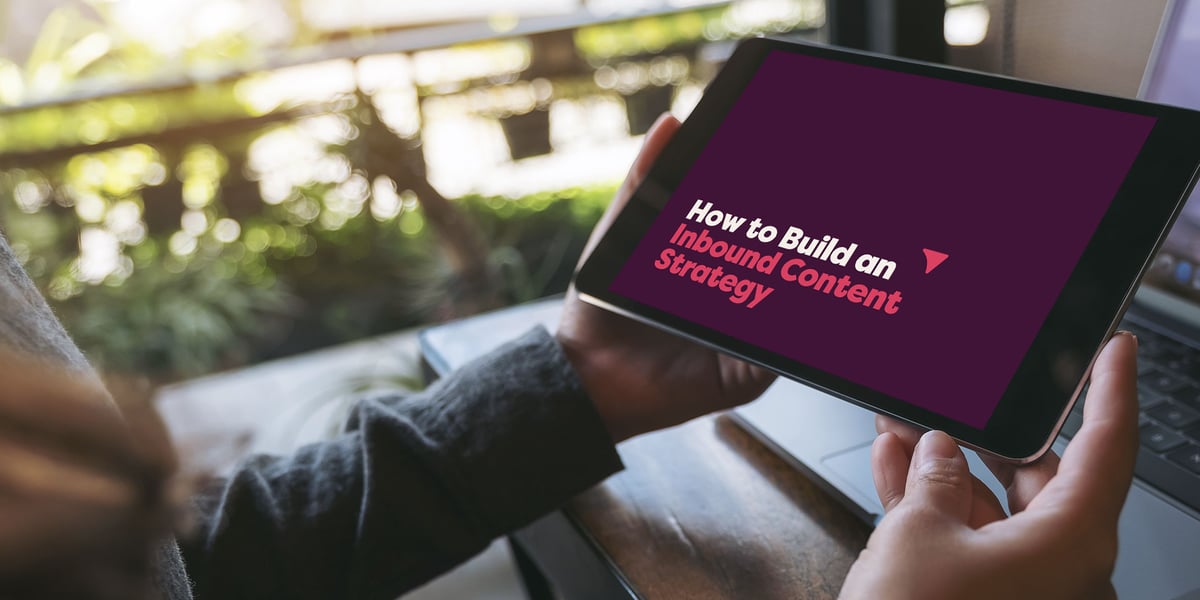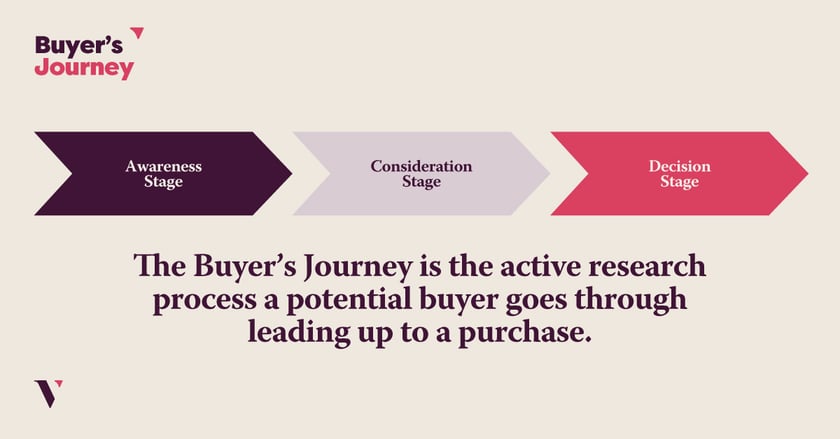
We’ve all been there — laying on the couch binging reruns of Grey’s Anatomy. Just as they’re about to start a life-saving surgery, a commercial pops onto the screen and stops the show. How do you feel? Irritated?
Instead of interrupting potential customers with unsolicited promotions and content, the inbound marketing methodology focuses on drawing in consumers with the content and messaging that matters to them.
Check out our step-by-step guide on how to build the perfect inbound content strategy for your business or organization.
Create your buyer personas

Are you marketing to the right people? What does your ideal customer look like? What triggers them to take action and engage with your brand? All of these questions can be answered by building buyer personas.
A buyer persona is a fictional representation of your ideal customer based on market research and data from existing customers. These personas clearly lay out who your customers are and what they are looking for, answering questions like:
- What challenges do they deal with?
- What motivates them?
- How do they prefer to overcome challenges or pain points?
- Where do they go to gather information?
Having a deep understanding of your buyer personas allows you to create content, develop products, and start conversations that speak directly to your customers’ wants and needs. As a result, you will attract the most valuable visitors, leads, and customers to your company.
Name your goals
After you have an understanding of who you are marketing to, identify the goals you want to achieve (and when you should expect to see results). This will make it easier for you to focus on what’s important when it comes time to implement the inbound content strategy.
These goals should be as specific, measurable, attainable, relevant, and as timely as possible. A good rule of thumb is to assess your website’s current performance. Benchmarking data, like the monthly unique web visitors, amount of leads, and traffic sources, paint a clear picture of your marketing needs as a whole. From there, you can assess the areas of your marketing strategy that may need additional time and attention.
Map your customer’s buying journey

When it comes time to break down your customer’s buying journey, you can expect them to fall into one of three stages. For example, take Joel. His 2003 Honda Civic bit the dust, and he needs a new car. Here are the steps Joel might take through his buyer’s journey:
- Awareness — Joel starts casually looking at different vehicles online and suddenly starts noticing car billboards and advertisements in his daily routine.
- In the awareness stage, it’s critical to catch a potential customer’s attention with creative content or compelling offers.
- Consideration — Joel actively begins comparing different vehicles, reading reviews, customer ratings, and watching demos.
- In the consideration stage, it’s crucial to provide the answers and information your potential customer is looking for.
- Decision — Joel has officially reviewed all of his options and comes to the decision that he wants to purchase a 2022 Toyota Camry. Even though Joel has come to a decision, he has not yet made a purchase. This might be because he wants to see the vehicle in person, or because he needs to weigh his financing opportunities.
- The right nurturing process can bring your potential customer from the decision stage into the purchasing process. We’ll talk more about that a little bit later.
When creating an inbound marketing content strategy, it’s important that you understand the questions, concerns, and objections each of your buyer personas has during the three stages of their buying journey. Not only can you better map out the content for each stage, but it ensures that your customers will receive guidance and answers through every stage of their buyer’s journey.
Implement keyword research
Once you have a general understanding of your buyer personas and their journeys, it’s time to figure out how people are searching for information about your product or service. This is done with keyword research.
Keyword research will show you which keywords are best to target, as well as what your target audience is typing into Google to find products or services like yours. You can use this insight to strengthen your overall inbound marketing content strategy.
Once you have a general idea of what keywords to utilize, combine them into topic clusters. This strategy enables visitors to satisfy their entire search query while visiting one page of your website. By shifting your approach from one-off keywords to topic clusters, you will earn search engine trust and boost the organic web traffic that follows.
Create engaging content
At this point, you know your buyer’s personas, their journeys, your goals, and the keywords to use to reach those goals. Now, it’s time for content creation! Successful content can be used to attract your target audience at every stage of the funnel and even keep them engaged after a purchase.
With 2.5 quintillion bytes of data created every day, there’s a lot of noise on the internet. To cut through the noise and speak directly to your audience, you need to curate content people actually want to read. Get started by asking yourself the following questions:
- What persona are you targeting?
- What problem are you solving?
- What makes your content unique?
- What content formats will you focus on?
- How do you want to share the content?
Once you have answered these questions and planned for engaging content creation, you have one step left — nurture the leads and close the sales.

Focus on lead nurturing
Some of your customers may purchase a product or service quicker than others. If one of your leads sits on unanswered questions or concerns, they might stall in their current stage of the buyer’s journey. Or, even worse, they might fall out of the buyer’s journey and find their solution from a competitor. You can avoid this by focusing on lead nurturing.
Lead nurturing is the process of keeping your potential customer’s attention by tending to their wants and needs throughout the entire buyer’s journey. When building an inbound content strategy, you need to anticipate the needs of your prospects and provide them with the information or answers they want.
Nurturing your leads will greatly impact the results of your inbound marketing content strategy, customer loyalty, retention, and revenue. But don’t just take our word for it — one study showed that 47% of nurtured leads make larger purchases than their non-nurtured counterparts.
You don’t have to do it alone

Well, there you have it. Now that you know all the steps, you can start your own inbound marketing content strategy. And if you don’t have enough time, we do!
Our Vye team has a knack for organizing marketing efforts with specific goals that lead to a return on investment. We start with your vision and turn it into a thoughtfully crafted plan. See for yourself; start the conversation today!

